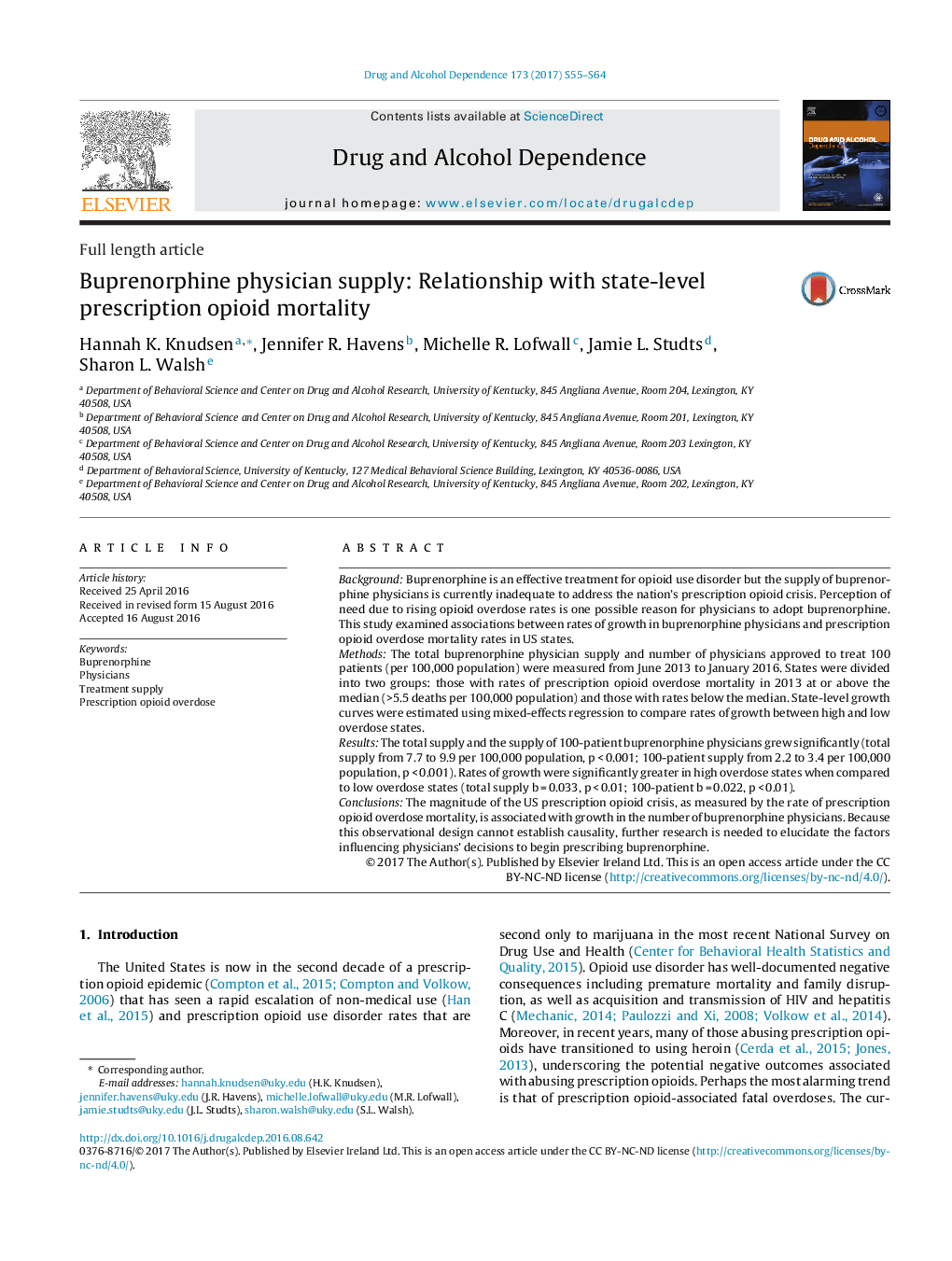| Article ID | Journal | Published Year | Pages | File Type |
|---|---|---|---|---|
| 5120182 | Drug and Alcohol Dependence | 2017 | 10 Pages |
â¢Physicians may adopt buprenorphine in response to rising opioid mortality.â¢State-level prescription opioid mortality and buprenorphine physicians were studied.â¢States with greater overdose mortality had greater growth in buprenorphine physicians.â¢States in the West, Midwest, and South had slower growth than Northeastern states.
BackgroundBuprenorphine is an effective treatment for opioid use disorder but the supply of buprenorphine physicians is currently inadequate to address the nation's prescription opioid crisis. Perception of need due to rising opioid overdose rates is one possible reason for physicians to adopt buprenorphine. This study examined associations between rates of growth in buprenorphine physicians and prescription opioid overdose mortality rates in US states.MethodsThe total buprenorphine physician supply and number of physicians approved to treat 100 patients (per 100,000 population) were measured from June 2013 to January 2016. States were divided into two groups: those with rates of prescription opioid overdose mortality in 2013 at or above the median (>5.5 deaths per 100,000 population) and those with rates below the median. State-level growth curves were estimated using mixed-effects regression to compare rates of growth between high and low overdose states.ResultsThe total supply and the supply of 100-patient buprenorphine physicians grew significantly (total supply from 7.7 to 9.9 per 100,000 population, p < 0.001; 100-patient supply from 2.2 to 3.4 per 100,000 population, p < 0.001). Rates of growth were significantly greater in high overdose states when compared to low overdose states (total supply b = 0.033, p < 0.01; 100-patient b = 0.022, p < 0.01).ConclusionsThe magnitude of the US prescription opioid crisis, as measured by the rate of prescription opioid overdose mortality, is associated with growth in the number of buprenorphine physicians. Because this observational design cannot establish causality, further research is needed to elucidate the factors influencing physicians' decisions to begin prescribing buprenorphine.
